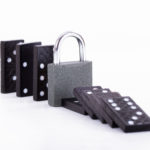Despite all your vigilance and best efforts, a seemingly innocent email has revealed itself to be a malicious phishing attack. And unfortunately you unknowingly fell victim and franticly searching the internet for a solution.
Phishing emails have been increasingly difficult to detect with the naked eye, the average user cannot tell the difference between a safe and phishing email. But time is of the essence…
First things first, disconnect your device from the internet immediately, you can return here on another device that is not infected once you’re done. Disconnect your computer by disconnecting the Ethernet cable from your Desktop or Laptop, or by opening up your Wi-Fi settings and disconnect from the current network.
Back? Great, Disabling the internet connection on the infected device will keep any malware from doing what it is programed to do; send your sensitive information to the programmer. This will also keep an attacker from remotely accessing your device and sifting through your files.
Second, start a full system scan with your anti-virus software (jump down to the next paragraph if you don’t have an anti-virus already installed). When you start the application it will give you an error message saying that it can’t connect to the internet, ignore the message; you can still run the scan with your installed software. The scan may take some time, be patient and do not do anything else with the infected device while the scan is running. You will be notified when the scan is completed, simply follow the instructions to remove or quarantine suspicious files.
If you don’t have an installed anti-virus software on the infected device, you can download antivirus software to a non-infected device, then by using a storage device such as a thumb drive/or USB Drive, you can transfer the antivirus software to the infected device.
Third, back-up your files. Once the malware has been removed you can back up your files for extra assurance that none of your files have been corrupted. If you regularly back up your files you should not lose more than a few files. However, if you don’t regularly back-up your files I would suggest buying a 1 terabyte drive for storage (you can usually find them for about $100).
Fourth, change your credentials. Malware can be used to steal your sensitive information including any online usernames and passwords. You should change ALL usernames and passwords, including emails. DO NOT use the same usernames and passwords for multiple accounts, why make it easier for the criminals?
Fifth, contact any one of the major credit bureaus and ask for a free 90-day fraud alert to be placed on your credit report. The three major bureaus are Experian, Equifax and TransUnion. Once you notify one they are required by law to contact the other two on your behalf.
Phishing emails have become some of the most dangerous and common threats in the modern age. Your best protection is to err on the side of caution and always look out for suspicious activity. When you see it, always use the ‘delete’ key if you suspect an email is contaminated, don’t just send it to the trash box.
And of course, if you or your business is Protected with Protek security services, do not hesitate to call protek support at (801) 999-4767.
Protek’s first priority is to keep you and your business secure, for more Tips and Tricks check out our Blog or Like and Follow us on Social Media:

 Despite all your vigilance and best efforts, a seemingly innocent email has
Despite all your vigilance and best efforts, a seemingly innocent email has 


